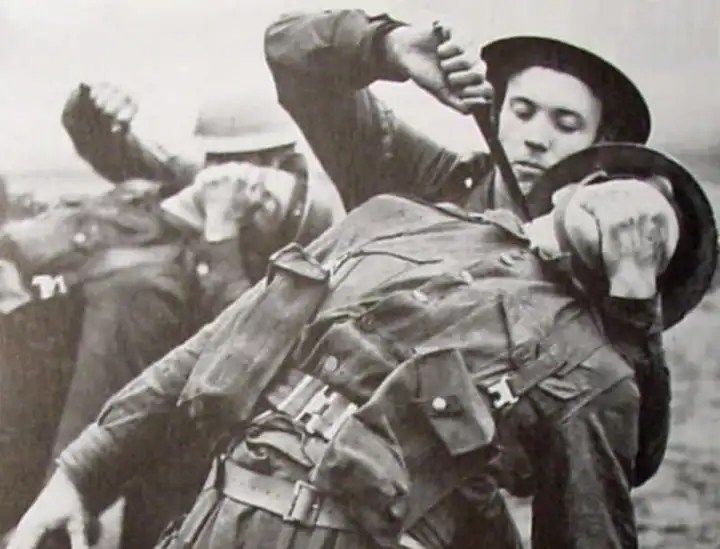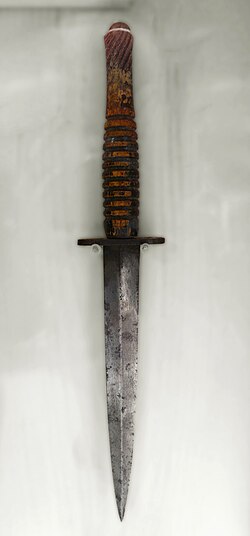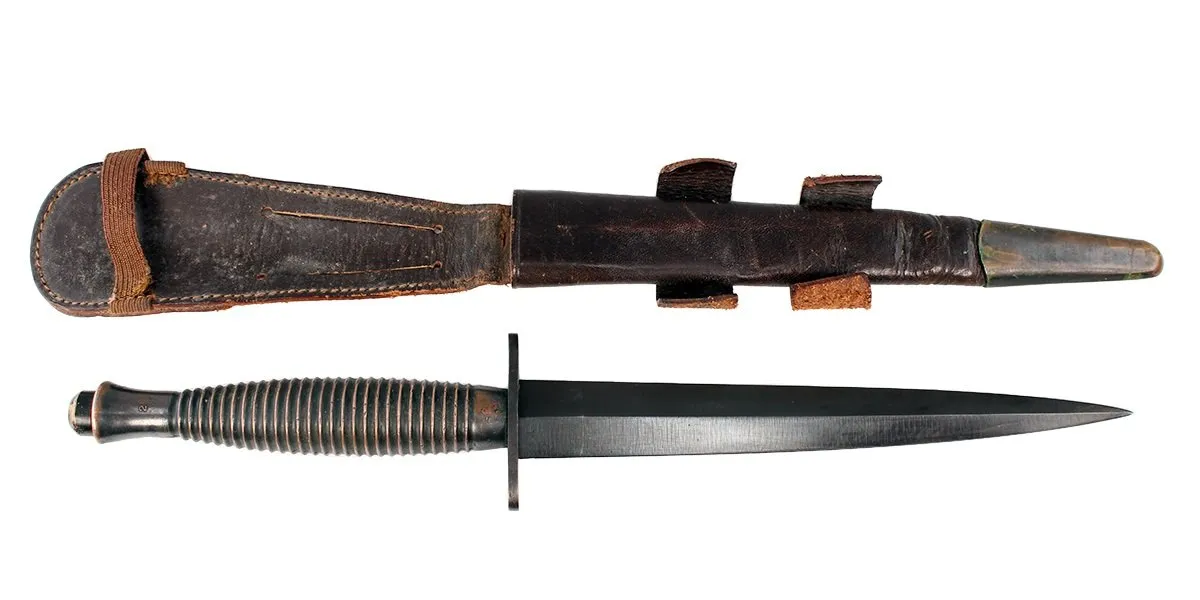Here at LoadOut, we all love talking knives. There’s just so many of them, that have so many different functions. There are knives that hang on belts, some knives that open Amazon boxes, knives that go into the glovebox for an emergency. And then there are knives quite literally born in blood, trained in darkness, and forged for war behind enemy lines. The Fairbairn-Sykes Fighting Knife is that knife. A dagger made for the kind of men who didn’t ask permission, didn’t wear name tapes, and didn’t come home in press releases.
Designed in 1941 for British commandos and clandestine operatives, the Fairbairn-Sykes was no survival knife or bayonet. It was created for one purpose, eliminating the enemy up close and personal. And it’s still one of the most iconic blades to ever slip through the shadows.
Let’s sharpen the facts.
From Shanghai Streets to European Battlefields
To understand the Fairbairn-Sykes, you’ve got to understand its creators, William E. Fairbairn and Eric A. Sykes. Ivory tower designers sketching in a drawing room they were NOT. They were bare-knuckle lawmen in the mean streets of 1930s Shanghai, the most dangerous city in the world at the time. Think John Wick meets colonial chaos.
Fairbairn and Sykes were officers in the Shanghai Municipal Police, dealing with triads, warlords, kidnappings, and everything short of kaiju. They pioneered close-quarters combat methods that would influence militaries and martial artists for decades. I don’t say this lightly, they were legitimately some of the hardest dudes on planet earth at the time. They had realized something early, when things go sideways in a tight alley, you don’t need a bowie knife. You need something fast, balanced, and lethal.
By the time World War II kicked off, these two were brought back to Britain to train the newly formed Special Operations Executive (SOE) and the Commandos. That’s when the Fairbairn-Sykes Fighting Knife was born. Its design was simple, elegant, and terrifying: a narrow double-edged blade, optimized for thrusting, with a slim handle that aligned naturally in the hand for instinctive strikes. No gimmicks. No nonsense.
Just cold steel and even colder intent.
Blade for the Bold
The Fairbairn-Sykes was issued to British Commandos, the SAS, the SOE, and even American OSS operatives, the spiritual grandfathers of today’s CIA, just less political. It was a badge of belonging to the most elite, most secretive, and most aggressive warriors of the Allied cause.
Make no mistake, this wasn’t some optional kit. This was standard loadout (wink-wink), for sabotage missions, night raids, and silent kills. When you see vintage photos of guys with the thousand-yard stare and a knife strapped to their calf, odds are it was a Fairbairn-Sykes. This blade meant business.
The shape itself was controversial. Some criticized it for being fragile, since it wasn’t meant for utility use. But that misses the point. It wasn’t supposed to open ration tins. It was supposed to slip silently and cleanly through a sentry’s ribcage without alerting a passing patrol. The blade’s stiletto profile was all about deep penetration and quick withdrawal. In the hands of someone trained by Fairbairn and Sykes, this thing was surgical.
Steel in the Shadows
What made the Fairbairn-Sykes really stand out wasn’t just its function, but rather its whole aura. The slim blacked-out blade, the turnings on the grip for better retention, and the subtle variations between wartime production runs gave it an instantly recognizable silhouette. It whispered dark promises of violence in the night.
You’d find it strapped to the thighs of saboteurs dropping behind German lines. You’d find it in the hands of Resistance fighters trained in Britain’s covert schools, slipping through the French countryside with a radio in one hand and this knife in the other. It’s the kind of weapon that didn’t come with instructions. If you were issued one, you already knew what to do.
The SAS still incorporates a stylized version of the Fairbairn-Sykes in their regimental crest. That’s how deep the legacy goes.

Pop Culture Infamy
Now let’s talk screen time. The Fairbairn-Sykes has had plenty of Hollywood and gaming cameos too.
In Call of Duty: World at War, it’s a go-to melee tool for sneaky takedowns. In Inglourious Basterds, Lt. Aldo Raine’s crew channels that same clandestine energy, though the blade itself doesn’t make a direct appearance, the vibe is all over it, and had that been a real history story, you bet your sweetmeats they all would have been carrying F-S’s. If you’ve played Sniper Elite, Medal of Honor, or Battlefield V, you’ve probably knifed a few NPCs with a digital F-S.
The blade pops up in spy thrillers, WWII dramas, and even in modern gear reviews from military surplus collectors. It’s the spiritual godfather of every modern dagger used by special forces today, from the EK Commando Knife to the Yarborough Knife carried by U.S. Army Special Forces.
Modern Legacy: Still in the Fight
So what happened after WWII? Did the Fairbairn-Sykes fade into obscurity?
Not quite. It continued service in various forms throughout the Cold War, and many modern military daggers take cues from its design. Today you can still find reproductions from brands like Sheffield Knives and Wilkinson Sword. They’re not uber-tactical gun-show blades. These are collector-grade, ceremonial, and functional tributes to one of the most legendary weapons in Allied history.
Even modern SOF units, while they may carry updated tools, know where their roots lie. The DNA of the Fairbairn-Sykes lives on in the blades used by the professionals kicking in doors today.

Final Cut: A Knife with a Mission
The Fairbairn-Sykes Fighting Knife wasn’t made to be a jack-of-all-trades. It was made for a specific mission, by men who knew the ugly truth of war. It served not just in battle but in the silent, dirty, and morally grey spaces in between.
It’s a reminder that sometimes tools don’t need to be flashy or multifunctional to change the course of history. Sometimes a simple piece of steel, wielded with purpose, becomes legendary.
And in a world of carbon fiber, flippers, and tactical folder overload, the Fairbairn-Sykes still stands as a timeless icon. It doesn’t need bells or whistles. It needs a hand that won’t shake when it kills.
Read the full article here


